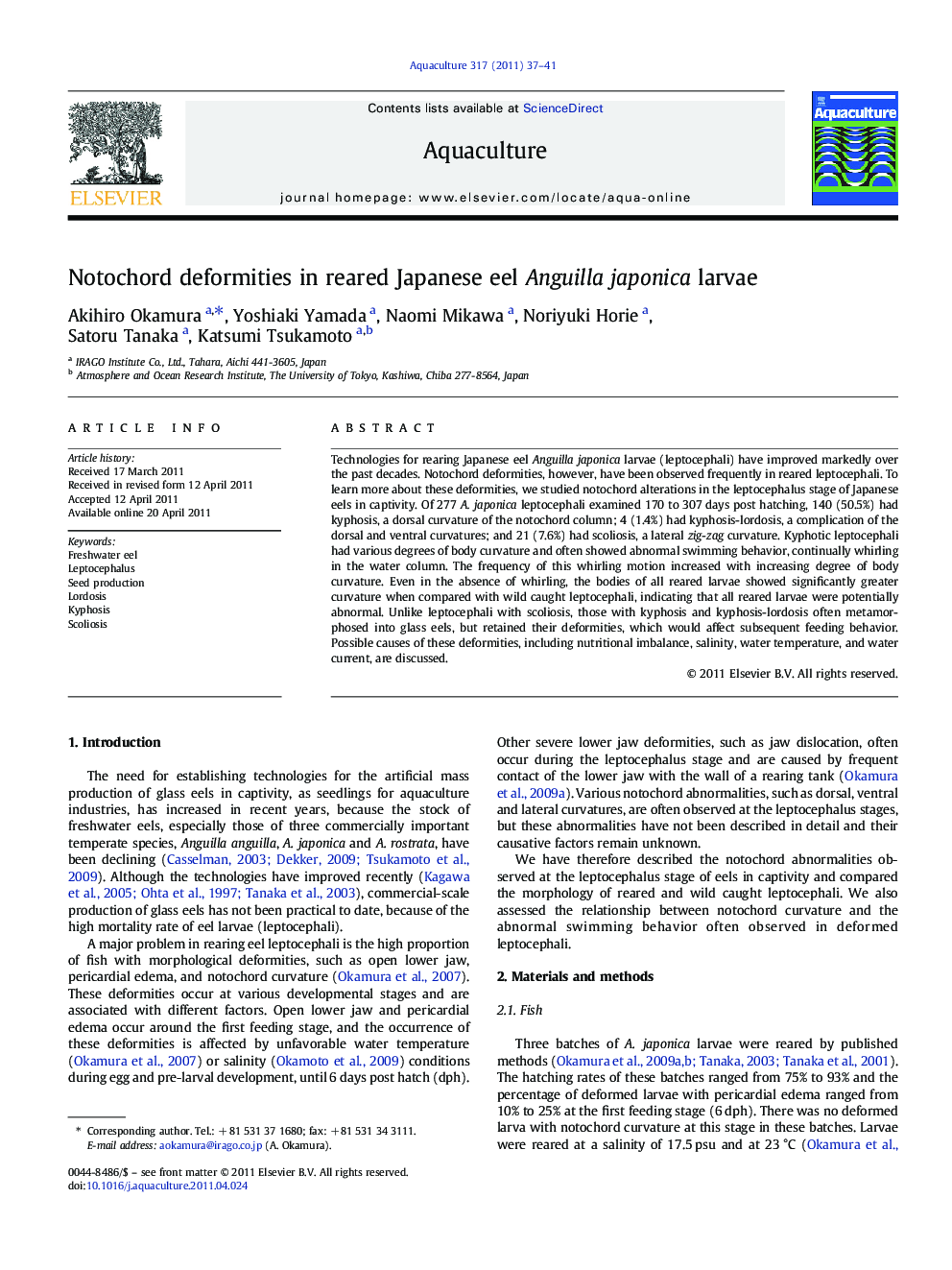| Article ID | Journal | Published Year | Pages | File Type |
|---|---|---|---|---|
| 2423243 | Aquaculture | 2011 | 5 Pages |
Technologies for rearing Japanese eel Anguilla japonica larvae (leptocephali) have improved markedly over the past decades. Notochord deformities, however, have been observed frequently in reared leptocephali. To learn more about these deformities, we studied notochord alterations in the leptocephalus stage of Japanese eels in captivity. Of 277 A. japonica leptocephali examined 170 to 307 days post hatching, 140 (50.5%) had kyphosis, a dorsal curvature of the notochord column; 4 (1.4%) had kyphosis-lordosis, a complication of the dorsal and ventral curvatures; and 21 (7.6%) had scoliosis, a lateral zig-zag curvature. Kyphotic leptocephali had various degrees of body curvature and often showed abnormal swimming behavior, continually whirling in the water column. The frequency of this whirling motion increased with increasing degree of body curvature. Even in the absence of whirling, the bodies of all reared larvae showed significantly greater curvature when compared with wild caught leptocephali, indicating that all reared larvae were potentially abnormal. Unlike leptocephali with scoliosis, those with kyphosis and kyphosis-lordosis often metamorphosed into glass eels, but retained their deformities, which would affect subsequent feeding behavior. Possible causes of these deformities, including nutritional imbalance, salinity, water temperature, and water current, are discussed.
